Data Blog: Recent trends in LPG consumption in India
Further to our recent blog post analyzing the fiscal impact of direct transfer for LPG in FY 2014-15, this blog provides additional data on recent trends in LPG consumption and subsidy expenditure.
In the most recent financial year, total subsidized consumption by volume, subsidized consumption as a percentage of household consumption and subsidized consumption as a percentage of total consumption all increased sharply. Provisional Ministry of Petroleum and Natural Gas (MoPNG) data indicates that in FY 2014-15:
- Total subsidized consumption increased by 18%, or 166 million cylinders (the largest increase recorded)
- Total unsubsidized consumption decreased by 19%, or 43 million cylinders (the largest decrease recorded)
- Subsidized consumption increased to 86% of total LPG consumption (from 81% in FY 2013-14)
- Subsidized consumption increased to 97% of domestic consumption (from 92% in FY 2013-14)
In FY 2014-15, total LPG consumption grew by over 10% relative to FY 2013-14 – a sharp increase on the previous year’s growth rate (4.7%). The Figure "Annual LPG consumption" below presents total annual LPG consumption and LPG consumption growth rates from FY 2008-09 onwards.
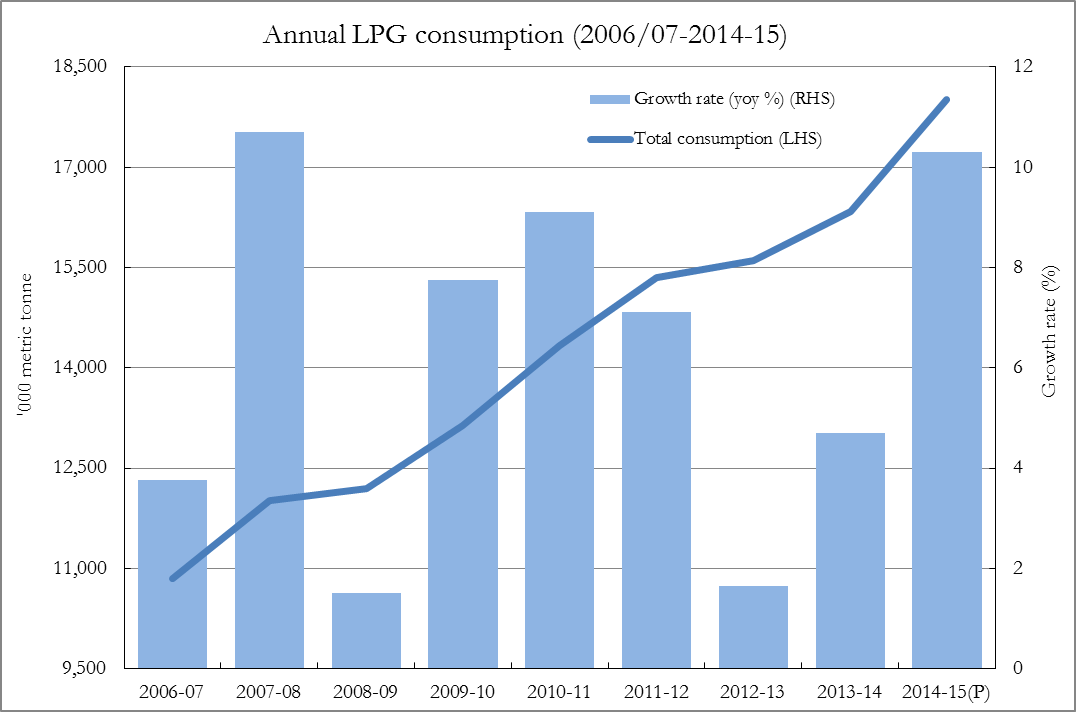
Within total LPG consumption, subsidized household consumption represents the predominant consumption sub-category, typically constituting over 85% of total consumption. The Figure "LPG consumption by category" below presents LPG consumption by sub-category from FY 2008-09 onwards, highlighting the marginal status of all other consumption categories within overall consumption.
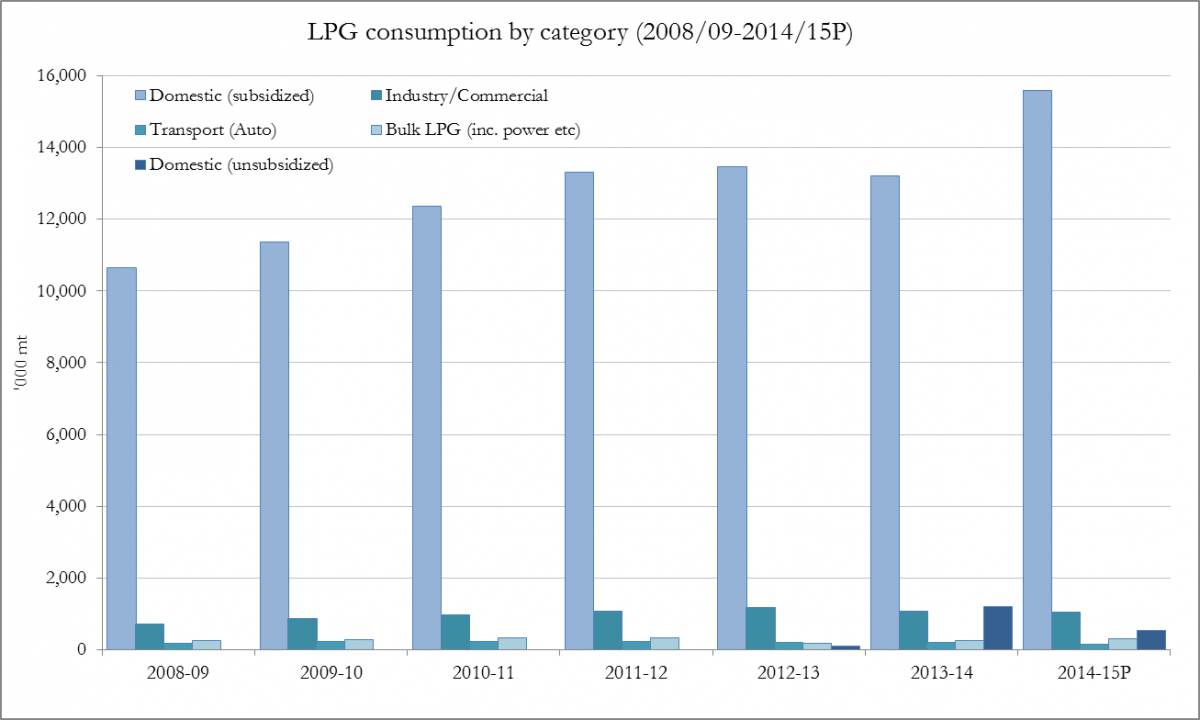
The significant increase in overall LPG consumption in FY 2014-15 was due almost entirely to a sharp rise in the consumption of subsidized household LPG in FY 2014-15, increasing by almost 18% (the equivalent of 166 million 14.2kg cylinders) relative to FY 2013-14 (see fig. 3 below). This represented the largest annual increase in subsidized LPG consumption on record (in both percentage and absolute terms).
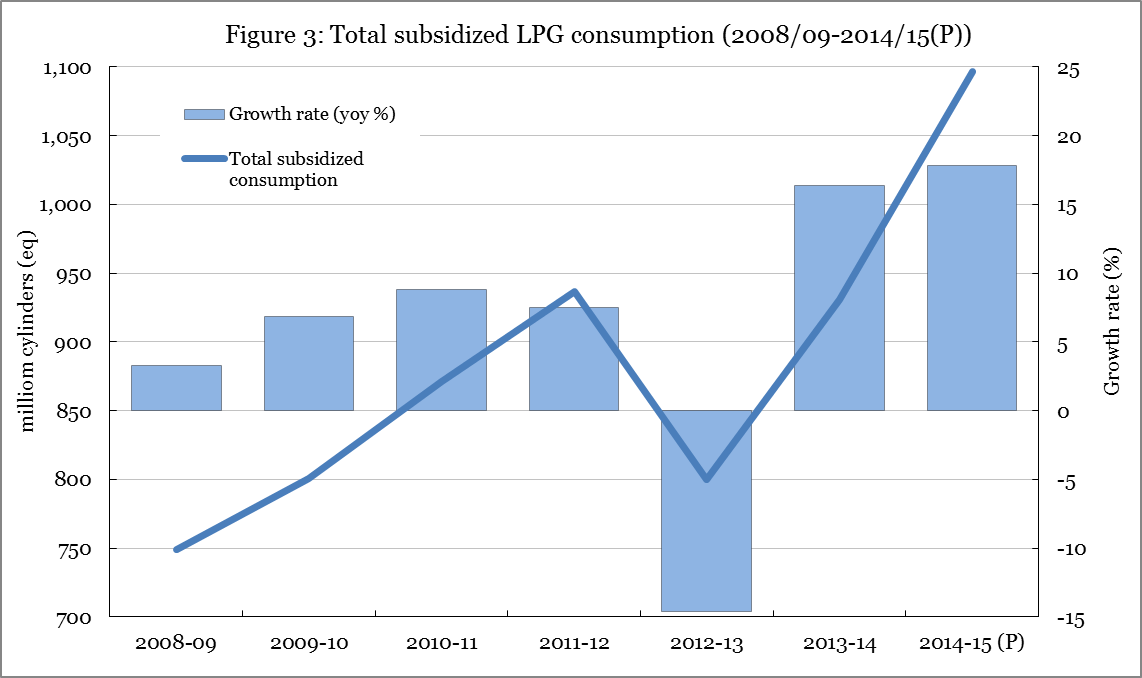
In addition to the significant increase in subsidized consumption, and despite a strong increase in overall LPG consumption, total unsubsidized consumption (including all categories) fell sharply from its previous high in FY 2013-14, declining by over 19% (the equivalent of 43 million 14.2kg cylinders) (see fig. 4 below). This represented the largest annual decrease in unsubsidized consumption on record (in both percentage and absolute terms).

Figure 5 below provides a detailed breakdown of unsubsidized consumption by sub-category, demonstrating that the large fall in total unsubsidized consumption in FY 2014-15 was due almost entirely to a collapse (of over 50%) in the consumption of unsubsidized domestic LPG.

As outlined in several previous reports and research notes, the only policy that has immediately and substantively reduced total LPG subsidy outlay is the institution of a realistic annual household cylinder cap. This cap, which unlike DBTL represents a simple and cost-effective measure to curtail subsidy transfer to the upper deciles of the population and generate fiscal space for more efficient social expenditure, was initially set at 6 per household in September 2012, before subsequently being raised to 9 per household in January 2014 and 12 per household in January 2015. Figure 6 below provides monthly LPG consumption and growth rates for the previous four years, highlighting the impact of the subsidized cylinder cap on overall LPG demand (and the relative lack of impact of DBTL).
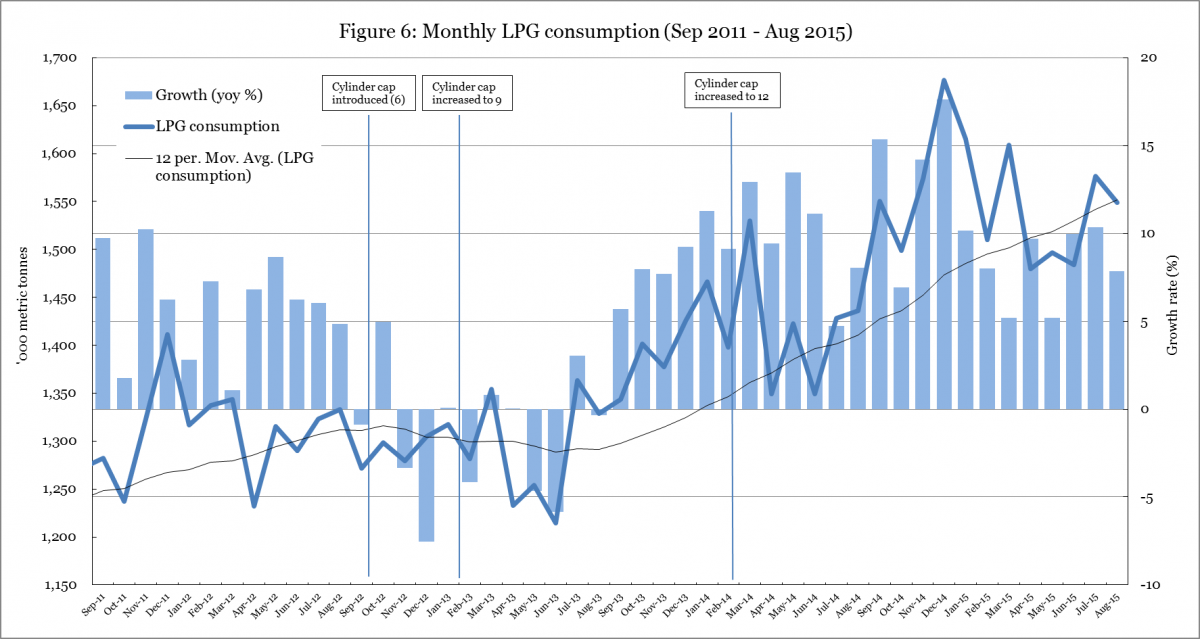
The effect of the previous cylinder cap was also clearly visible in the composition of LPG consumption in FY 2013-14, with total subsidized consumption falling in absolute terms for the first time in a decade (see fig. 6 above), and unsubsidized consumption increasing substantially both in absolute terms (growing by 46% relative to FY 2012-13 – see fig. 4 above) and as a percentage of total consumption. Figure 7 below presents total subsidized and unsubsidized LPG consumption from FY 2008-09 onwards, showing the effect of the simultaneous fall in subsidized consumption and increase in unsubsidized consumption in FY 2013-14 on the ratio between the two categories (with unsubsidized consumption increasing from 13.7% of total consumption in FY 2012-13 to 19.1% in FY 2013-14). Due to the UPA administration’s relaxation of the per household allocation, and the NDA government’s subsequent failure to reinstate a realistic per household quota, subsidized consumption then rose sharply in FY 2014-15 - increasing by the equivalent of 166.3 million cylinders relative to FY 2013-14 (as detailed in fig. 3 above) - while unsubsidized consumption fell to 13.9% of total consumption.
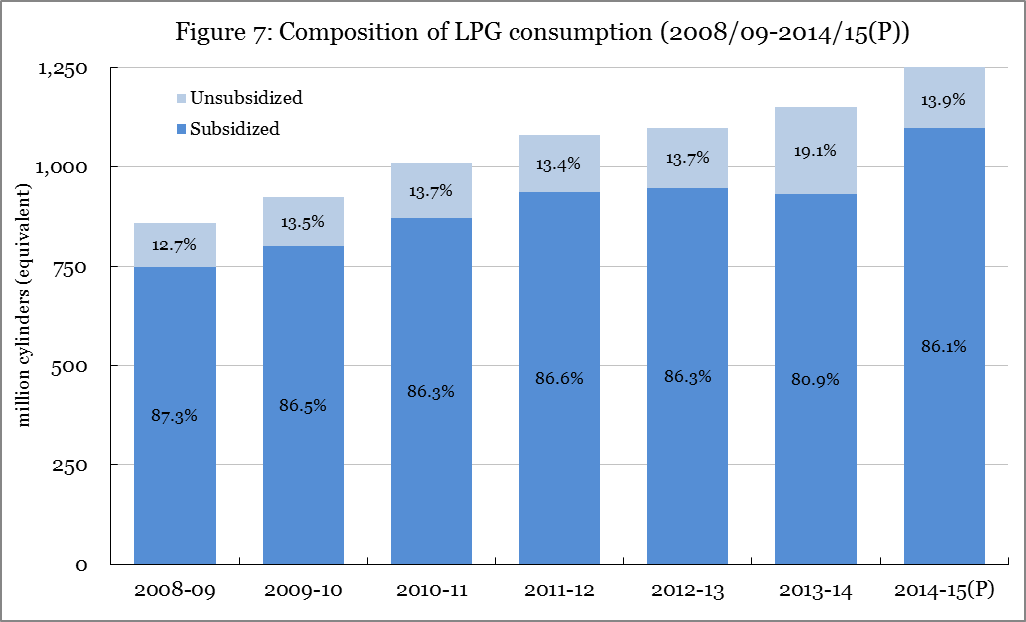
This sharp rise in subsidized consumption did not lead to an increase in full-year LPG subsidy expenditure due solely to rapidly falling international oil prices in the second half of FY 2014-15, leading to a 65% decrease in recorded LPG unit under-recoveries between November 2014 and February 2015 (see fig. 8 below).

Full calculations and references available on request. This brief will be updated as additional data becomes available.
Additional analysis on LPG consumption and subsidies is available here, here and here.
